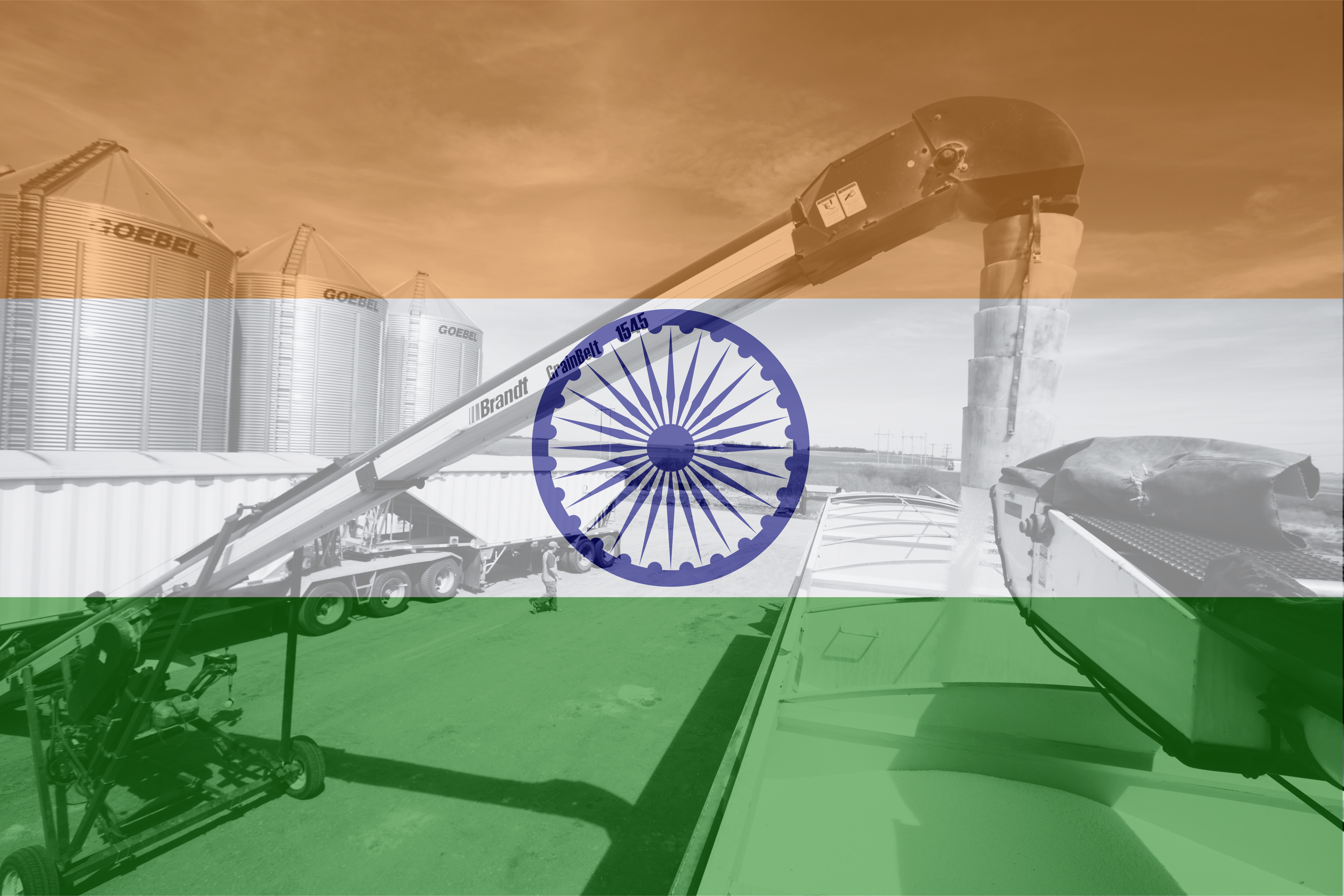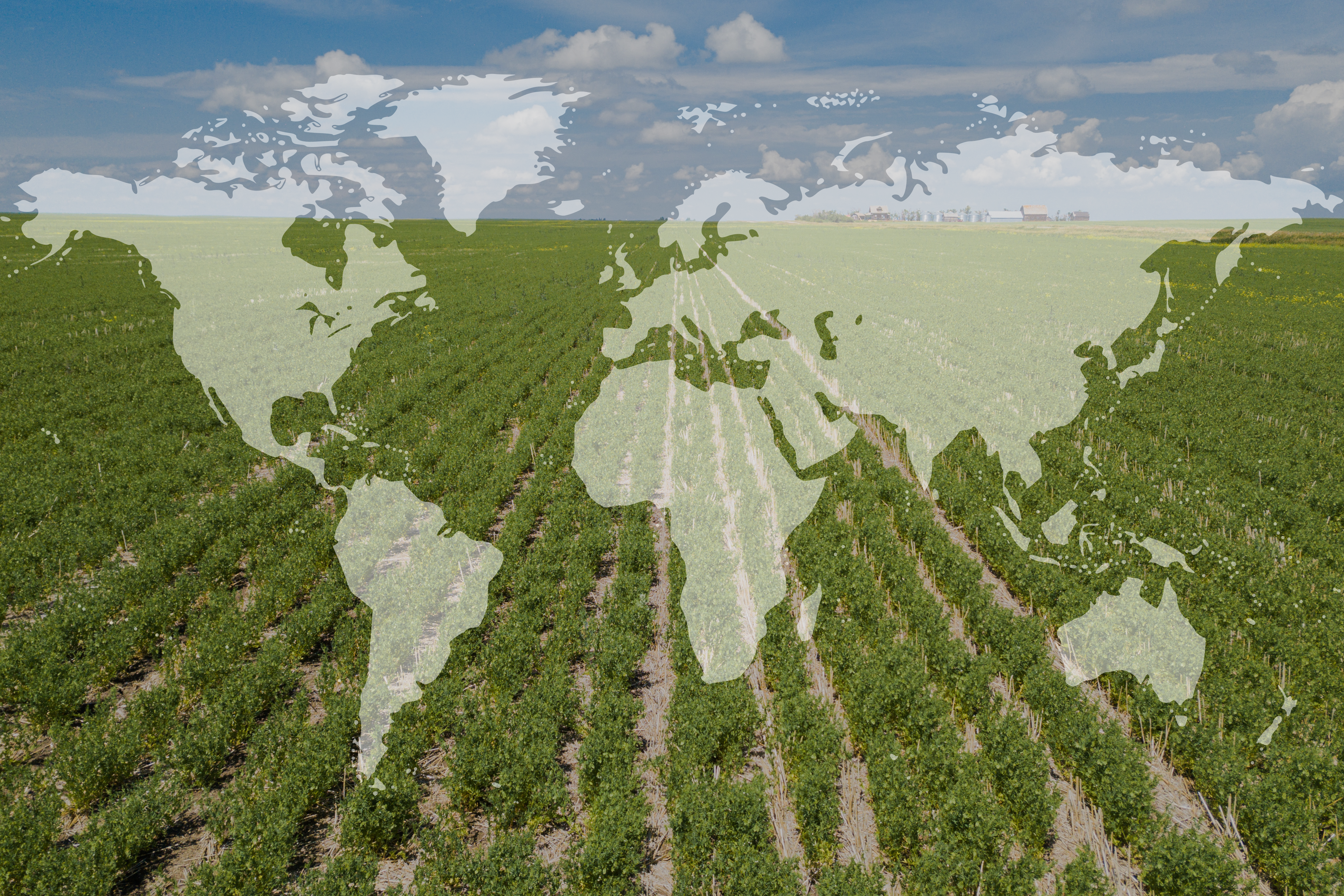Brian Clancey, STAT Publishing Ltd.
March 3, 2020
There has rarely been as much uncertainty in global pulse markets as there is today. Much of that is linked to the spread of the coronavirus around the world, with markets worried about the effect it could have on demand and the movement of product around the globe.
Some bulk freight carriers will not let people get on or off ships in countries where the virus has been found. Several container ship sailings have been cancelled because of an overall decrease in global trade.
The bigger risk is when countries start banning trade with countries where the infection has been detected. Kuwait became the first country to take such measures. On February 25 it banned all vessel sailings between it and South Korea, Italy, Thailand, Singapore, Japan, China, Hong Kong, and Iraq.
As the disease spreads around the globe, travel restrictions, possible city closures, and the banning of large public gatherings would be expected to have an impact on trade flows. The implication is current forecasts for residual stocks of pulses around the globe could be lower. Any issues that made it hard for trade, whether border controls between the United States and Mexico, or at ports, could hurt prices paid to farmers for all commodities.
Canadians are very aware of the impact of transportation on its ability to meet export obligations. Twice during the 2019/20 marketing season, once in November because of a strike, and in February because of blockades, exporters had trouble meeting sales commitments.
Demand from China for field peas remains solid, but its imports of all commodities has fallen because of travel restrictions within the country. There is a fear its imports of peas could be lower than currently expected.
At the same time, India expects to harvest its third largest pulse crop across its 2019/20 production cycle. Because the late withdrawal of the monsoon caused significant crop damage, some crop forecasters expected huge drops in the amount of pulses harvested during its summer, kharif season. The main pulse grown is tur or pigeon pea. Some millers import green lentils as a substitute. Fears of a smaller harvest resulted in a bump in green lentil imports.
However, traders in India say because tur is a very hardy crop, the government forecast that production jumped from 3.32 to 3.69 million (M) tonnes could be accurate. At the same time, the country thinks this winter’s rabi season chickpea harvest could jump from 9.94 to 11.22 M tonnes.
The implication is clear. There would be no reason for India to relax its restrictions on pea imports. So far, there has been no talk about restricting lentil imports, but some exporters are worried that could happen.
Interestingly, India’s efforts to reduce imports of all pulses could have an impact on how many pulses are available to consumers in the next couple of years. Right now, it looks like its residual stocks of pulses could drop from 3.6 M tonnes last year to around 2.23 M by the end of 2020. If production all pulses stays around 23 M tonnes per year, residual stocks could plunge under 500,000 tonnes by the end of 2021 and by 2022, India would need to dramatically increase imports. The implication is it needs to keep pursuing policies that raise production to around 25 M tonnes per year.
Complaints about India’s quantitative import restrictions and high import duties on pulses were brought before the World Trade Organization (WTO) last year by Canada, Australia, the United States, and other net exporting countries.
However, if the WTO decided those policies were contrary to India’s obligations, nothing more would happen. India just needs to appeal any decisions and that would be the end of the matter because the WTO appeals court only has one judge. Until the WTO is reformed in ways that appeal to the United States, it will keep blocking appointments, making the WTO irrelevant.
That is important. Countries can pretty now much do as they please. Aside from increasing import duties or imposing its own quotas, Canada cannot do anything to pressure India or any country not covered by a trade agreement to change their policies.
Possible and real problems affected trade flows are not have much impact on world production. One reason is when one market becomes hard to access, others are almost always found. Increased use of pulses in food products is helpful, but the volumes needed by the sector may never be equal to some of the big importers of raw products.
Three things can have a powerful effect on how much of any type of pulses are planted each year.
One is the ability to sell what you grow. Movement of lentils and peas has been good so far this marketing year, especially yellow peas and red lentils. Between August and December, export movement of both crops was up over last year, while shipments of green peas and lentils were down compared to the same five months in 2018. Chickpeas have been a sad case. Exports are down but sales to the domestic feed market appear to be up because of quality issues with last year’s harvest.
A second is competition between crops for land use. One indicator of where area might go is to compare the average gross return so far this season with the previous three year average versus other crops. So far this season, all pulses are doing poorly versus wheat, durum, barley, and canola. Average gross returns are below their previous three year averages.
Lastly are crop rotations. Because of the economic benefit of pulses for the next crop, there is likely a base acreage each year, with farmers switching what land they can between pulses based on where they see the best opportunity.
Overall, it looks doubtful there will be dramatic changes in total field pea and lentil area, while chickpeas should drop again this year in both Canada and the United States. Total field pea area could slip, with greens slipping by a smaller proportion than yellows. Land in all classes of lentils has the potential to increase because of a greater emphasis on reds in response to good movement and reasonable prices.
What is decided this spring will have an impact on prices during the last three months of the marketing year. If end users think new crop prices will be higher, they should try to buy more of last year’s crop. If they expect little change in values or somewhat lower new crop prices, it would be surprising if they chased old crop product.
Assuming we can maintain exports and that there are not a lot of interruptions to export movement, residual supplies of all pulses should decline again in the coming marketing year.
That suggests we could see the best prices paid later in the marketing than sooner. However, if that is what most growers think, we could see prices rally in the fall shipping period as exporters and processors work to cover their needs.
Brian Clancey is the Editor and Publisher of www.statpub.com market news website and President of STAT Publishing Ltd. He can be reached at editor@statpub.com
Table 1: Global Pulse Supply and Demand Outlook (in Tonnes)
| Production | 2015 | 2016 | 2017 | 2018 | 2019 | 2020 | Average |
| Beans | 22,639,000 | 21,520,000 | 23,238,000 | 21,262,000 | 21,313,000 | 21,840,000 | 21,994,400 |
| Chickpeas | 10,651,095 | 11,109,323 | 13,556,102 | 16,289,000 | 13,808,800 | 14,320,800 | 13,082,864 |
| Lentils | 6,204,000 | 8,291,000 | 6,813,000 | 5,743,000 | 5,556,000 | 6,372,000 | 6,521,400 |
| Peas | 10,658,000 | 13,849,000 | 14,176,000 | 12,344,000 | 13,096,000 | 12,400,000 | 12,824,600 |
| Total | 50,152,095 | 54,769,323 | 57,783,102 | 55,638,000 | 53,773,800 | 54,932,800 | 54,423,264 |
| Total Supply | 2015 | 2016 | 2017 | 2018 | 2019 | 2020 | Average |
| Beans | 23,741,000 | 22,301,000 | 24,472,000 | 22,925,000 | 22,393,000 | 23,231,000 | 23,166,400 |
| Chickpeas | 11,238,095 | 11,573,323 | 13,689,102 | 17,697,000 | 16,382,800 | 16,767,800 | 14,116,064 |
| Lentils | 6,780,000 | 8,639,000 | 7,363,000 | 6,954,000 | 6,463,000 | 6,782,000 | 7,239,800 |
| Peas | 11,508,000 | 14,119,000 | 14,756,000 | 13,304,000 | 13,726,000 | 13,510,000 | 13,482,600 |
| Total | 53,267,095 | 56,632,323 | 60,280,102 | 60,880,000 | 58,964,800 | 60,290,800 | 58,004,864 |
| Trade | 2015 | 2016 | 2017 | 2018 | 2019 | 2020 | Average |
| Beans | 4,940,000 | 5,336,000 | 5,289,000 | 5,286,000 | 4,446,000 | 4,685,000 | 5,059,400 |
| Chickpeas | 2,446,000 | 2,502,000 | 3,153,000 | 2,043,000 | 1,885,000 | 2,320,000 | 2,405,800 |
| Lentils | 3,568,000 | 3,212,000 | 3,562,000 | 3,144,000 | 3,095,000 | 3,285,000 | 3,316,200 |
| Peas | 5,280,000 | 6,200,000 | 6,900,000 | 6,450,000 | 6,800,000 | 6,630,000 | 6,326,000 |
| Total | 16,234,000 | 17,250,000 | 18,904,000 | 16,923,000 | 16,226,000 | 16,920,000 | 17,107,400 |
| Inferred Use | 2015 | 2016 | 2017 | 2018 | 2019 | 2020 | Average |
| Beans | 22,960,000 | 21,067,000 | 22,809,000 | 21,845,000 | 21,002,000 | 21,967,000 | 21,936,600 |
| Chickpeas | 10,774,095 | 11,440,323 | 12,281,102 | 15,123,000 | 13,935,800 | 14,992,800 | 12,710,864 |
| Lentils | 6,432,000 | 8,089,000 | 6,152,000 | 6,047,000 | 6,053,000 | 6,576,000 | 6,554,600 |
| Peas | 11,238,000 | 13,539,000 | 13,796,000 | 12,674,000 | 12,616,000 | 12,620,000 | 12,772,600 |
| Total | 51,404,095 | 54,135,323 | 55,038,102 | 55,689,000 | 53,606,800 | 56,155,800 | 53,974,664 |
| Ending Stocks | 2015 | 2016 | 2017 | 2018 | 2019 | 2020 | Average |
| Beans | 781,000 | 1,234,000 | 1,663,000 | 1,080,000 | 1,391,000 | 1,264,000 | 1,229,800 |
| Chickpeas | 464,000 | 133,000 | 1,408,000 | 2,574,000 | 2,447,000 | 1,775,000 | 1,405,200 |
| Lentils | 348,000 | 550,000 | 1,211,000 | 907,000 | 410,000 | 206,000 | 685,200 |
| Peas | 270,000 | 580,000 | 960,000 | 630,000 | 1,110,000 | 890,000 | 710,000 |
| Total | 1,863,000 | 2,497,000 | 5,242,000 | 5,191,000 | 5,358,000 | 4,135,000 | 4,030,200 |
| Stocks to Use | 2015 | 2016 | 2017 | 2018 | 2019 | 2020 | Average |
| Beans | 3% | 6% | 7% | 5% | 7% | 6% | 5% |
| Chickpeas | 4% | 1% | 11% | 17% | 18% | 12% | 8% |
| Lentils | 5% | 7% | 20% | 15% | 7% | 3% | 11% |
| Peas | 2% | 4% | 7% | 5% | 9% | 7% | 5% |
| Total | 4% | 5% | 10% | 9% | 10% | 7% | 7% |
Based on historical data from the FAO and other country specific data sources.
Note: Desi Chickpea production should be up, while Kabuli is down.
Copyright © 2020 STAT Publishing Panama Ltd. All Rights Reserved.



